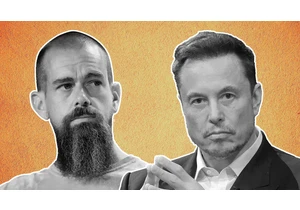Read more about how Amazon is upending business, from A to Z
Catherine Seifert just wanted to solve the problem of where to put her purse in her car. Before she knew it, she had a patented device and a multimillion-dollar business selling her mesh slings (designed to bridge the vertical space between seat backs) on Amazon. Seifert’s brand, Car Caché, isn’t a household name, but its signature product features professional photos, Amazon’s “#1 Best Seller” sticker, a reasonable price tag ($19.99), and 7,000 ratings—exactly the formula that persuades shoppers on the site to click “Buy now.” Other shoppers began spotting the Car Caché product listing late last year and wanted to “buy now,” too—the whole business, that is, and its $18,000 per day in sales. Thrasio, a 3-year-old company that has raised $1.7 billion in debt and equity to buy brands sold exclusively on Amazon, was the first to reach out. (Update: The company raised another $1 billion in October.) In its cold email to Seifert, a former business development executive who had been selling on Amazon since 2014, Thrasio congratulated her on her success (“bravo!”) and wrote that her business “has the key ingredients of what we look for: great product and happy customers.” Seifert, suspicious, marked the email as spam. But soon, more than a dozen of these so-called aggregators began contacting her. Curious, she dug through her spam folder, replied to Thrasio, and then opened negotiations with the rest. An executive at Softbank-backed Perch, which has raised more than $900 million in less than two years, courted her on a Zoom call. Another firm touted its prowess by trotting out staff who had experience working with organizational guru Marie Kondo. Seifert was impressed. But Thrasio prevailed. “The money up front was the same,” Seifert says. The Boston-based Thrasio, however, offered her what she calls an “astronomical” payout for future growth. By selling her business, Seifert no longer has to worry about search rankings, warehouse costs, negative reviews, or counterfeiters—which is precisely what makes cashing out so appealing. (A promotional video on Thrasio’s website features the founder of another brand the company acquired relaxing in his new Corvette, new speedboat, and new Florida digs.) Thrasio, meanwhile, now owns 200 brands and is on track to generate over $1 billion in revenue this year; it touts itself as the U.S. company to reach unicorn status fastest. In the two decades since Amazon opened its platform to third-party sellers, this marketplace unit, as the division is called, has surpassed Amazon’s own physical product sales. Last year, it generated an estimated $300 billion in sales, according to research firm Marketplace Pulse. During the pandemic, Amazon’s own retail sales grew, but its third-party merchants grew even faster. Competitors such as Walmart and Target, not surprisingly, have recently opened their own platforms to outside sellers. While Amazon spent marketplace’s early years wooing prominent retailers onto the platform, a steady stream of mom-and-pop brands were setting up storefronts there. Thanks to the ubiquity of Prime memberships and the ease of Amazon’s fulfillment services, which include everything including storing, shipping, tracking, and customer service, this stream became an ocean. A few years ago, it caught the attention of deep-pocketed investors, who had initially been wary of backing merchants whose fates were deeply intertwined with the whims and algorithms of an opaque e-commerce giant. They saw strength in numbers: If an aggregator could acquire the best of these merchants across different categories—that is, ones making over $1 million a year, with profit margins greater than 20% and a customer rating of at least four stars—it could create a new kind of consumer packaged goods company, a sprawling, internet-era Unilever comprising a thousand niche brands, built off the back of a retail juggernaut. There are now more than 70 aggregators. Collectively, they have raised nearly $9 billion, which they’ve used to acquire hundreds of Amazon-native brands and thousands of products. To compete, buyers “need $100 million [in capital], table stakes,” says Fortia Group cofounder David Hyland, who brokers deals for sellers. Competition for sellers with the greatest growth potential, as Seifert discovered, can be fierce. Because most of these merchants rely on Amazon for fulfillment, aggregators are essentially buying the login credentials for a seller’s account, along with their inventory and intellectual property. Though Thrasio and Seifert declined to offer specifics on their deal, bids for a well-run Amazon brand typically start at more than three times adjusted annual revenue, meaning that sellers of Car Caché’s size are cashing eight-figure checks. E-commerce aggregation is still in its infancy, but it marks a turning point for online retail. On Amazon, it portends a future in which larger-scale entities have elbowed out the little guys, creating a marketplace that is more professional but perhaps less vibrant. It also points the way forward in brand marketing; whereas companies like Procter & Gamble once built brands via television advertising and prominent in-store displays, these modern conglomerates establish theirs by mastering search engine optimization (SEO), targeted advertising, and customer reviews. The upside for aggregators with the right portfolios could be enormous, given that e-commerce still comprises barely a fifth of the overall retail landscape. They face a looming set of hurdles, though. Amazon represents the epitome of transactional commerce, where customers shop with specific intent. To succeed in the near term, aggregators will have to master a game defined by Amazon’s search bar and its keyword dark arts—and hope the company doesn’t change the rules on them. In the long term, if they want to live outside Amazon, they’ll have to turn these more-or-less anonymous brands into household names. If Amazon is the everything store, then Thrasio is the everything aggregator. Camping gear, pillows, nail clippers, exercise balls: At first glance, the array of products seems plucked at random from Amazon’s retail river. But Thrasio’s cofounders, Josh Silberstein and Carlos Cashman, have a plan. They started the company in 2018, after they got their hands on seller data through an Amazon software provider and quickly noticed a trend. As sellers approached $10 million in revenue, their profit margins would decrease and their sales would plateau. “They’d say, ‘We don’t have the ability to manage supply chain, marketing and creative, and new products,'” Silberstein says. Many small businesses face scaling challenges, but almost no one was focused on providing the Amazon-seller ecosystem with growth capital or exit options. Silberstein and Cashman, serial entrepreneurs, convinced investors to provide them with relatively cheap debt and began targeting sellers who had hit a ceiling. By April 2020, they had strong enough results as a nascent conglomerate that they were able to raise $75 million in Series B funding, along with $35 million in debt. The big numbers surprised other investors, who began looking for more aggregators to back. According to Thrasio, the company has paid performance earn outs to 94% of the sellers it has acquired. For Silberstein, that track record is evidence of his company’s Amazon expertise. “There’s probably not a single product in our portfolio where I couldn’t sit down right now and rewrite the listing and improve conversions,” he says. Better photos, better keywords, better copy: that’s just the basics. “We have four or five obvious strategies,” he explains. “And then there are probably three or four things that we know how to do, [that] I don’t think anybody has any clue about. I’m not going to share them. But [these things] are 10 to 20 times more valuable than anything else.” Pressed to offer more detail, he pauses. “I guess the only thing I would say is that Amazon is an SEO ecosystem that is intertwined in lots of unexpected ways. And if you understand where those paths lead, then you often will discover that there are things that you didn’t realize were there.” While Thrasio navigates deeper into Amazon, its emerging rival, Perch, sees the platform as merely a springboard. Its approach, according to founder and CEO Chris Bell, is to let sellers do the early-stage experimenting, and then sweep up those who have carved out a profitable niche. From there, Perch plans to take its brands to other marketplaces, direct-to-consumer channels, and even brick-and-mortar stores. Through email marketing, the company is already attempting to build a loyal audience for some of its brands. The goal, says Bell, is to have “a collection of consumer brands that are household names.” A former Wayfair executive, he has no special affection for Amazon, and argues that most sellers don’t either: “Amazon was just the easiest place for an entrepreneur to find a hole in the marketplace that they wanted to fill.” So far, Perch has acquired more than 80 brands. Of those, the company is already selling roughly two dozen via off-Amazon channels. The infant sleepsuit maker Baby Merlin, for example, which Perch acquired earlier this year, is now also available at Buy Buy Baby. Though it’s hard to separate the boost e-commerce got from the pandemic from a specific company’s performance, for Perch, the strategy seems to be working: On average, it’s on track to grow its brands 75% year over year. Another differentiating factor for Perch is that it might soon be able to fulfill its own orders. While working together at Wayfair, Bell and Perch COO Matt Montgomery created a supply chain capable of delivering furniture, even hot tubs, within two days, nationwide. With the pandemic stretching Amazon’s fulfillment capacity to the limit, an aggregator with its own warehouses would be in an enviable position. In July, Perch spent $100 million to acquire a smaller conglomerate called Web Deals Direct, which operates more than 30 brands, including vacuum bags and vanity mirrors. Included in the sale: Web Deals Direct’s 230,000-square-foot warehouse, near the port of Long Beach, California. Aggregators would be wise to study up on the lessons learned by the direct-to-consumer darlings of the early 2010s. Warby Parker, Away, and others eventually realized the importance of diversifying their distribution channels; many now operate brick-and-mortar stores and partner with big-box retailers. “The beauty of building a strong brand is that it creates its own momentum,” says Marisa Mulvihill, a partner at brand consultancy Prophet. “The risk to this [aggregator] model is that the brands don’t feel authentic; they feel like a faux brand from a huge conglomerate.” But brand building is expensive. Even Allbirds and Warby Parker are still unprofitable. If one thing is certain, it is that not all of these aggregators will survive. “We’re already beginning to see some acquirers of Amazon businesses starting to struggle,” says Ryan Gnesin, CEO of Elevate Brands, which owns some two dozen Amazon sellers. “We’ve had several companies offer us their portfolio.” Some aggregators will buy duds. Some will struggle to operate what they acquire. Some will lose share to price-competitive China-based brands, which comprise nearly half of the marketplace ecosystem. Caught in the heady rush of a chance to snag a piece of Amazon’s growth, aggregators may forget that they are embarking on a novel, untested strategy. (Even Thrasio, seemingly the aggregator to beat, has delayed a plan to go public via SPAC, following the abrupt departure of its CFO and “complications with its audits,” according to CNBC.) But for the victors, the spoils will be substantial. By almost every measure, Thrasio, Perch, Elevate, and their peers are just getting started. “The aggregators still own less than 1% of products sold on Amazon,” says Greg Mercer, CEO of Jungle Scout, an analytics tool for Amazon sellers. Amazon, in other words, is just so big, they may never have to leave. How Chinese sellers came to dominate Amazon’s marketplace When Chinese factories, which had operated in obscurity, began burnishing their brands and selling directly to consumers, some six years ago, Amazon executives were ready to help. “We are that vehicle,” a former marketplace VP wrote in a 2015 internal memo. At the time, Chinese sellers represented an estimated 15% of Amazon’s U.S. marketplace. Today, they represent 40%. The largest, like computer-accessory brand Anker, are worth billions of dollars. Low prices: Chinese Amazon sellers are often manufacturers as well. They charge low prices by cutting out middlemen and operating with razor-thin margins. Rapid product development: Close proximity to factories allows other Chinese sellers to quickly hop on trends, though critics say this leads to counterfeit products. Concentration of innovators: The majority of China’s Amazon sellers are based in Shenzhen. They’re actively sharing information and best practices with one another.
Accedi per aggiungere un commento
Altri post in questo gruppo

Elon Musk loves to project strength. He flexes loudly—hyping Tesla and xAI, bashing the federal government, even parenting like a drill sergeant. Lately, he’s been trying to flex in gaming.

Before media outlets began comparing OpenAI’s Sam Altman with the father of the atomic

At first glance, your Kindle might seem like a no-frills reading device: straightforward, minimal, and focused on the basics. Kind of like an actual book, huh?
But beneath its simple exterior lie

Few statements communicate a sentiment more directly than the four words Jack Dorsey, a cofounder of Twitter, posted over the weekend o

Two California Democrats have introduced a bill that would allow rideshare drivers to bargain with gig companies, including Uber and Lyft, for better pay and certain benefits.
The measur

OpenAI on Monday launched its new AI model GPT-4.1, along with smaller versions GPT-4.1 mini and GPT-4.1 nano, touting major improvements i

Daters: It might be time to spring clean your dating app profile.
More than 50% of young Americans have gone on a date with someone who looked different from their profile photos, accord
